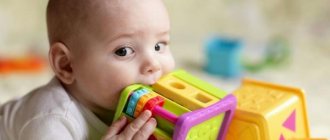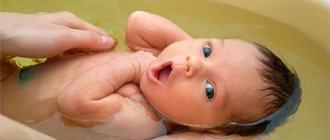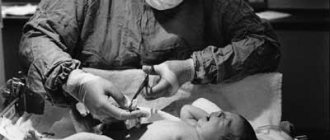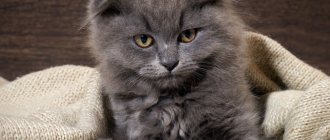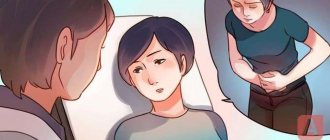What it is?
Doctors deny the existence of such a disease in principle. They point out that calling such hair stubble is a mistake. It is more correct to talk about lanugo. This is hair that grows on a child's body while still in the mother's womb. Lanugo appears after the 12th week of pregnancy and gradually disappears by the time of birth. It has no color, and the hairs themselves are distinguished by excellent thinness and weightlessness.
These thin hairs help retain the vernix lubrication, which up to a certain point covers the entire body of the fetus. When the skin becomes multi-layered and able to protect the baby, the lanugo begins to fall out. Scientists are inclined to believe that this mechanism is an atavism - a borrowed trait from distant ancestors. Other atavisms include the embryonic tail and gills at an early stage of pregnancy.
According to official medicine, this phenomenon does not pose any danger, and therefore no treatment is provided for it. But this explanation is of little satisfaction to parents who do not sleep for several days due to the constant anxiety of their newborn child.

Traditional medicine strongly recommends removing bristles to save the whole family. However, it is important not to harm the baby.
What to do and how to roll it out?
To begin with, the mother and father of a crying infant should make sure that the reasons for the crying do not lie in something else. Babies can cry for a variety of reasons - from hunger, cold or heat, damp diapers or uncomfortable diapers, pain. If the little one is well-fed, clean, the room is cool and damp enough, the diaper does not cause allergies, the child is healthy and does not arouse suspicion from the pediatrician, but the roar is such that the neighbors have already asked several times if everything is okay in the family, it’s worth a try detect the bristles if they are not visually visible.
Diagnosing indistinguishable bristles, which can be reliably hidden from the eyes of others in the layers of the skin, will require some patience from parents. First, the child should be bathed in warm water, the skin should be steamed well, then carefully blotted with a sheet or soft diaper. Avoid hard towels and rubbing movements.
Store-bought bread or rolls are not suitable for this method. Parents will have to bake their own bread. The dough should be made classic, on dough. From still warm homemade bread, take a piece of crumb the size of a tennis ball and roll it up. Next, use intense circular movements to roll this ball along the child’s back. It is advisable to cover both the shoulder and forearm areas.
Usually, hard and prickly hair remains on the bread crumb, and the baby's skin becomes smooth and soft. If everything is done correctly, the baby will sleep more peacefully.
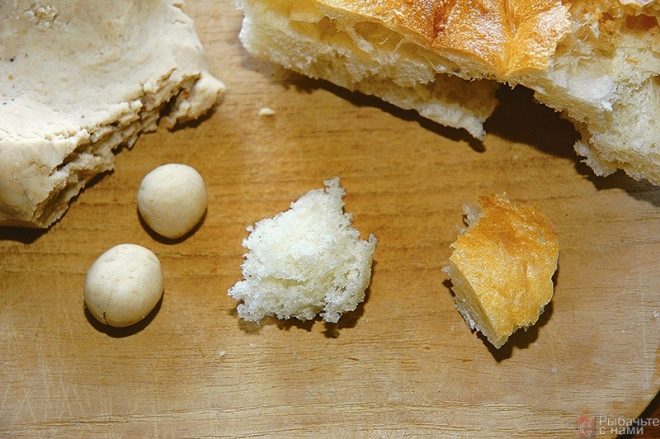
Usually a chicken egg can remove the bristles. It should be hard-boiled, cooled until warm, and peeled. The skin of the back is rolled out with a warm egg in the same way as bread crumb. If everything is done correctly, the hard bristles will begin to leave their place, bringing noticeable relief to the child.
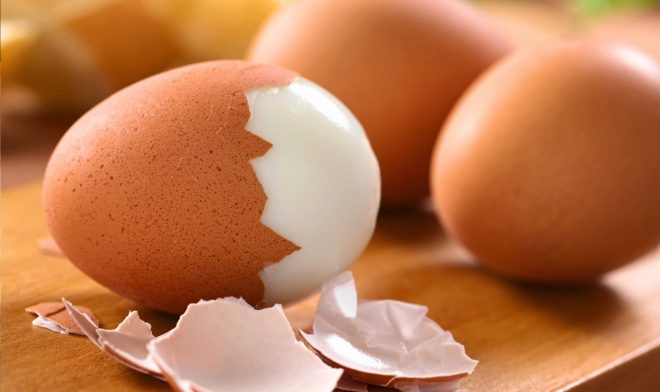
The second method involves preparing a thick and elastic dough from the same ingredients. A ball the size of a tennis ball is molded from it, and with this ball they make circular movements with slight pressure on the skin of the back.
If you can’t roll out all the hairs the first time, the procedure can be repeated, but you will have to prepare a new portion of warm dough for rolling out again.
A child with stubble or fuzz on his back should be bathed carefully and carefully. Hygienic procedures will not help you get rid of stubble right away, but you will definitely get results. Bathing water must be at a certain temperature - no higher than 37 degrees. It is better not to use soaps and skin care gels. If desired, you can add a glass of chamomile decoction to the water.
Do not use hard sponges or scourers. A soft baby sponge with micropores is suitable for washing the back.

What can't you do?
Parents can find a lot of advice on the Internet on how to remove stubble, but above we have given only child-safe ways to remove coarse and unpleasant hair. Other methods can pose a danger to the health and even the life of the baby. Let's talk about this in more detail.
Advisers who recommend taking the child to the bathhouse should be sent there too. It is strictly contraindicated for a newborn to take a steam bath. The baby’s skin is thin, the network of blood vessels is located close to the surface, the thermoregulation of a baby differs from that of an adult, and therefore even a short stay in the bathhouse can lead to hyperthermia with all the ensuing consequences - disturbances in the functioning of the central nervous system. Overheating can be deadly for a baby.
Recommendations from some healers regarding the use of honey and bee products for smearing and rubbing into a child’s skin can be the beginning of a severe allergic reaction, because honey is prohibited for children under three years of age, even externally.

Advice to apply anything and combine it with cling film wraps is generally extremely harmful and can have the most negative consequences - from blockage of the sweat and sebaceous glands and the occurrence of skin rashes to overheating of the body and the death of the child.
Parents should understand that coarse bristles should not be shaved or cut. Mechanical removal may lead to subsequent infection and the development of severe systemic infection. Plucking and removing with scissors increases the likelihood of injuring the skin and also causes severe pain to the baby.
You cannot use depilatory products that your mother successfully uses. This is fraught with chemical burns and severe allergies.
For information on stubble in newborns, watch the following video.
- Newborn
- Reflexes
- APGAR scale
- When he begins to hear and see
- Care
- Diapers
- Swaddling
medical reviewer, psychosomatics specialist, mother of 4 children
The birth of a child is a joy for parents, which can be overshadowed by justified anxiety when obvious deviations from the norm appear in the baby. Hair on the back of a newborn is not a pathology. Parents can hear a lot of opinions and advice from others on this matter, but you should not listen to and follow every one of them.
Fetal hair performs an important function
Lanugo, as embryonic hair is called, appears on the child’s body from the 12th week of intrauterine development. This phenomenon is not atavistic in nature. Nature made sure that the child was warm and his delicate skin was not injured. Hair performs an important function; it holds on the skin a special waxy lubricant secreted by the body of the embryo. Short, thin hairs, replacing each other, remain in the amniotic fluid. By the 30th week of pregnancy they disappear. A delicate fluff appears, remaining on the baby’s body even after birth.
Natural Causes of Having a Baby with Back Hair
Sometimes a newborn will still have hair on his back. This phenomenon is most often observed in premature babies. Not only their back, but also other parts of their body are covered with coarse hair that lasts longer than usual. This is natural, because intrauterine development was interrupted for some reason.
The amount of hair remaining on the newborn's back may indicate a hereditary predisposition.
The child’s belonging to a certain nationality or race may be the reason why hair remains on the newborn’s back after birth. Representatives of peoples living in the south usually have much thicker and darker hair than those living in northern latitudes.
If your newborn still has hair on his back and was born at his due date, there is no need to worry about this. After some time, they will disappear without a trace, giving way to delicate vellus hairs. This will happen during the first weeks of the baby's life.
Why does a child grow hair on his back?
Many babies are born with lanugo hairs, which develop from the time they are in the womb, from the twelfth week. Gradually the hairs die off, but are replaced by others.
The hairs gradually become thinner and less noticeable. For this reason, lanugo cannot pose a danger, because the main task is to protect delicate skin. Initially, the hairs retain a special substance secreted by the baby’s body and allow it to successfully develop in the womb.
At the same time, hair on a baby's back may appear after birth. Is this situation the basis for strong feelings? Before answering this question, it is important to understand why a baby may grow hair on his back after birth.
Reasons for hair growth on the back of infants:
- if a newborn is born with a large number of hairs on the back and other parts of the body, one can suspect the influence of heredity and the predominance of the hormone testosterone, which is responsible for such processes;
- The causes of abnormalities in hair development can only be determined by a doctor after an examination. To date, medicine has not identified specific causes for such deviations;
- premature birth of a baby. If the baby is not full term, the lanugo hairs have not completely fallen out;
- pathology. We can talk about this reason only if the hairs persist several months after the birth of the baby. Under such circumstances, you should consult a doctor who can diagnose and prescribe an effective course of treatment.
Vellus hair on the body of a newborn is not a typical disease, despite the fact that the baby can experience discomfort and pain.
How does vellus hair develop in a newborn? After the birth of a child, redness of the delicate skin is expected to appear, and this process is usually called physiological erythema. After a couple of months, the phenomenon goes away, but it is replaced by peeling of the skin, after which small hairs are discovered.
Such hair on the body of a newborn is vellus, but it can be felt if you stroke the baby’s delicate body.
If your child is restless...
The presence of hairs should not bother the child. But if he is anxious for no reason, cries, arching his back, sleeps poorly, you should find out whether the hair on the newborn’s back is the cause of discomfort. Clothing fibers can stick to the hairs and curl into clumps, which can cause discomfort for the baby.
Sometimes parents are given advice on how to remove so-called bristles using dough, bread crumbs or honey. This procedure involves rolling out hairs and can be painful for the child. Such actions can cause irritation and even inflammation of the delicate skin of a newborn.
To rid a child of lanugo, you need to adhere to strict hygiene rules and follow certain procedures. The newborn should be bathed regularly, gently massaging the back with a soft sponge. After bathing, the areas where lumps accumulate are lubricated with baby cream. After some time, the hair on the newborn's back will soften and can be carefully removed with a cotton swab.
The rapid thinning and disappearance of hair on the back of a newborn is facilitated by his activity. Parents should stimulate it by turning the child from side to side, from back to stomach.
How to remove hair on a newborn's back?
Unfortunately, vellus hairs on the back can lead to discomfort. For this reason, you need to know and understand what to do to alleviate the possible suffering of the baby. If a child is feeling anxious, certain recommendations can help improve the situation.
The herbal decoction should be strained and cooled
It is recommended to bathe in herbs in a bath
What to do if there is hair on the back of a newborn:
- It is advisable to bathe the child in herbs;
- after bathing, you should lubricate the skin with a special baby cream;
- Particular attention should be paid to the choice of clothing, since fleecy items can curl hairs and cause unnecessary pain to the little person.
In most cases, such hair is the remnants of thick hair that was there before birth, dead skin cells, and secretions of the sebaceous glands.
Poor care leads to the fact that hairs can roll down and resemble stubble. If you want to carry out prevention, they most often recommend daily bathing in herbs and lubricating the child’s body with a special cream with a fatty consistency.
If hair does appear on the back of newborns, it is advisable to show increased attention to the baby and monitor his condition.
What to do if the child is 4 months old and has a lot of hair on his body?
Mothers of children may be interested in the following question: the child is already several months old, but there is still a large amount of hair on the body. Modern medicine cannot reliably explain such circumstances, and there are not even approximate ideas. If a tuft of hair on a child’s back is still present, you need to understand in what situations it is advisable to take additional action.
It is advisable to take certain actions if:
- the child becomes anxious;
- night sleep is disturbed;
- the baby constantly cries;
- Pediatricians cannot explain the cause of the pathological process.
Only in this case can you try to remove hair on the back of a newborn yourself, remembering that not all methods are suitable.
Worth being wary
Parents should be concerned that the hair on the newborn's back does not disappear during the first three weeks of life. In this case, immediately consult a doctor. After all, we can talk about hereditary diseases or hormonal disorders of the child’s development. This may be evidenced by increased hair growth on the entire skin of the newborn.
Newborn babies present parents with many surprises that cause surprise and anxiety. Almost all babies are born with a little fluff all over their body; this is a natural condition. If an infant has visible hair on his back, ears, or face at birth, this should not be regarded as an anomaly.
Should you worry: two views on the appearance of bristles in a baby
The very idea that hard black stubble may appear on the body of a little baby can frighten any mother. What is this? Genetic disorder? A special type of damage? Or a signal of some internal disease? Finding dark thickened hair on the back or other parts of the body in newborns can be quite difficult to contain panic.
In fact, the attitude of mothers to this problem fully corresponds to the meaning of the saying “Fear has big eyes.” I hasten to reassure you and cite two important, in my opinion, facts.
- Firstly, official medicine does not recognize the diagnosis of “bristles in babies” at all;
- And secondly, even among the descriptions of this phenomenon in folk recipes it is noted that it does not pose any threat to the baby’s health and is quite easy to treat.
Lanugo or colloquially - fluff
Lanugo begins to be formed by the embryo's body already at the 12th week of its development. Thin hairs have a structure identical to the skin and protect against excess release of waxy substances from the body. This fluff does not have follicles, so one small hair is quickly replaced by another. Growth usually stops by 8 months of fetal development. The remaining part disappears from the surface of the skin during the first month of life after birth.
In those born at 7-8 months of pregnancy, lanugo can be expressed as hard, well-defined hair covering the area of the back and shoulders, and the edge of the oval of the face. Over time, these hairs wipe off on their own, without additional intervention. If the hair does not disappear within 2-3 months, this indicates developmental abnormalities caused by disease or hereditary factors.
How to make sure that your baby has a poker?
Even with a thorough visual inspection, it will not be possible to find stubble on the baby’s back and legs.
According to healers, the harmful poker is hidden under the skin and in order to find it, you need to use the following method:
- Bathe your baby in a well-heated bath or sauna, so that the baby’s skin perspires well;
- Place the bathed baby on the tummy, and drop a few drops of breast milk on the back. Start rubbing the milk over your baby's back until the bristles begin to protrude. But don’t be overzealous - if the bristles do not appear within 2-3 minutes of such a massage, most likely your baby does not have any poker.
If the hairs appear, you can choose any of the following traditional methods of treating the problem.
Diseases as a cause of hair growth
Corneli de Lange syndrome. With it, active hair growth on uncharacteristic parts of the body is accompanied by a delay in development and growth. Not only external but also skeletal abnormalities occur.
Hirsutism. Hormonal imbalance as a result of non-standard functioning of the endocrine system due to a hereditary factor. The hair on your baby's back grows quickly. Peak growth occurs during adolescence. It is normal and does not require special treatment. Hair is removed using cosmetic procedures.
Hypertrichosis. It occurs as a result of disruption of the nervous system, metabolism, the development of a malignant tumor, or a natural genetic abnormality in the type of DNA. The latter is not a cause for concern.
Congenital dysfunction of the adrenal cortex. Leads to active production of androgens. Brings the body closer to the male type. Female characteristics develop poorly. There is rapid growth, development of muscle mass, and a decrease in voice tone.
Excess body weight. Promotes the development of insulin-resistant dependence. This affects the production of male hormones by the adrenal glands. Untimely treatment inhibits sexual development. In girls it leads to ovarian dysfunction.
If by three months the hair on the child’s back does not disappear, you need to contact several specialists: a pediatrician, a neurologist, a geneticist, to rule out serious diseases.
Treatment
To eliminate discomfort, doctors recommend taking water procedures more often. Maintain hygiene. After bathing, wipe the baby's skin with olive oil or baby cream using a cotton swab. There are traditional ways to get rid of accumulations in the pores.
- Soaked bread crumb is applied to the film and applied to the back for 10-15 minutes. After 5-6 procedures, the pores are cleaned and discomfort disappears.
- The older generation advises using bread crumbs soaked in breast milk. After bathing, the accumulations are rolled out of the pores with circular movements of the soaked crumb along the back. This is done carefully so as not to injure the epidermis or cause a bacterial infection.
- You should not use depilatory products during infancy: thick sticky consistencies, tweezers, chemical creams, abrasive substances.
If a child has hair growing on his back as a result of a hereditary factor, he has to put up with it. The only way out of the situation is their depilation. This is especially true for girls.
- Removing hair from a child's skin is not recommended until the age of 8. From this age, depilation is carried out only with the written consent of the parent.
- From the age of 15, depilation is available in any medical institution or beauty salon. This procedure is less painful in childhood than in adults, since the hair structure is thinner.
- You can get rid of excess vegetation at home. To do this, they are shaved and every other day treated with a 3% solution of hydrogen peroxide mixed with soap. After several sessions, the hair becomes thin, breaks off, and its growth slows down.
When your child grows hair on his back, you shouldn’t panic. In most cases, this is a natural condition of the baby or the presence of a hereditary factor. If growth causes suspicion of the development of any disease, you should consult a specialist.
Stubble on the back of newborns is in most cases considered normal. Vellus hair will disappear on its own as you grow older, without requiring specific treatment. But if they appear in a child of three or four years old, only a doctor will determine the causes of this condition.
How to remove stubble from newborns
Modern medicine does not recommend doing anything if a hard hair is detected on a baby’s body. It is believed that it will roll out on its own over time. This statement is undoubtedly true, but what to do if the child is clearly worried and cannot sleep normally? Is it worth torturing him and yourself with a long wait for this to go away on its own? In order to ease the fate of the baby and parents, traditional medicine has come up with several ways to effectively remove stubble from a child.
Traditional healers claim that by using one of the simple and safe procedures that do not require repeated use, coarse hairs will come out of the child’s back, which can simply be washed off or removed with a towel. We will describe in detail several of the most effective and common methods of alternative (folk) medicine to remove stubble in newborns.
- Rolling out bread crumb. According to reviews, this is the simplest and most effective method for removing stubble from a newborn. To begin with, the baby needs to be thoroughly steamed in a sauna or warm bath. However, we must not forget about the safety of the baby, because his heat exchange has not yet formed and a long stay in a hot bath can result in a serious heat stroke for the baby. Therefore, it is better not to resort to such radical measures, but simply steam your baby well in the bathroom until his skin acquires an even pink color. Then dry it with a towel and place it on your tummy. Take a crumb of freshly baked bread. The crumb should be soft, easily wrinkled and sticky. Make a roller out of it and carefully roll it over the baby’s back. During the rolling out process, the bristles should remain on the crumb. After completing the procedure, carefully dry the baby's back with a warm, damp towel, removing any remaining crumb, and apply warm baby oil to it.
- Rolling out the dough. Its principle is the same as that of rolling out crumbs, only for this you need to prepare the dough yourself. According to one recipe, the dough is made like dumplings. It is also used to form a roller, which is used to carefully roll out the baby’s back and shoulders. According to another recipe, the dough is kneaded from honey and flour in approximately the same proportions. You should get a thick sticky dough. This dough is carefully rolled over the baby's back, the hair should remain on it. After these procedures, it is advisable to rinse the child with clean warm water and wipe dry with a terry towel. Don't forget to apply baby oil to your baby's skin after finishing.
- Hair removal with honey. We immediately warn you that this method may cause an allergic reaction in your baby, because honey is a very allergenic product. Before using this method, do a test on your child's skin: apply a drop of honey to your baby's wrist and leave for 10 minutes. Never let your baby lick the honey! If after 10 minutes the skin in this place does not turn red, then you can apply honey to the baby’s back without the risk of an allergic reaction. After thoroughly warming the skin in a bath or bath, rub the baby's back with warm honey and cover it with gauze. Leave the gauze on the back for 3-5 minutes, then carefully remove it and rinse the baby's skin with plenty of warm water. After this, dry the baby and wrap it in a thin diaper. After 10 minutes, remove the diaper - the hairs should remain on it.
Science has not established the effectiveness of these methods, but some mothers claim that they actually removed the stubble from a newborn in this way, after which the children returned to sound, healthy sleep. Whether you resort to these methods or not is up to you. But it is important to know that if you follow all the rules, these procedures will not cause harm to your baby’s health, and therefore will not be unnecessary. It is quite possible that after this your baby will sleep soundly again and wake up in a good mood. This means that all efforts and methods are justified in this case!
Both of my children did not have newborn stubble. Also, this phenomenon did not occur in the children of my friends and relatives, so I had never heard of this before. As for me, this looks more like another myth, and the child’s restless sleep is most likely caused by other reasons.
The bristle in children (in common parlance “poker”) is dark, rather coarse hair on the back. No one still knows the reasons for their appearance. But basically everyone is of the opinion that this is the remnant of vellus hair that protects the baby before birth. This can cause the child to sleep restlessly at night, arch his back, and throw his head back. So how do you remove a poker from a child? Traditional medicine knows a huge number of methods.
Any folk remedies for removing a poker from a child are not at all dangerous to health. There will be absolutely no harm from them. After all, only natural products are used as a basis.
The bristles can prevent your baby from sleeping peacefully. In order for it to disappear, you need to make the dough, as for dumplings, and roll it over your child’s back once a day for about two weeks. This must be done very carefully. And after this process, you should immediately make a bath and lubricate it with cream.
The next product that combats bristles in children is bread crumb. You need to take it fresh and roll it into several lumps. The procedure with bread should also be carried out shortly before bathing. The duration of the course is ten to fourteen days.
And finally, the last way to remove a poker from a child is flour mixed with honey. Proportions are taken 1:1. But if your baby suffers from allergic reactions to honey, then you should not use it even externally.
In some cases, the bristles may disappear on their own. You should simply wipe his back with a soft sponge when bathing. And after the bath, be sure to lubricate the area with the poker with rich cream.
But modern medicine officially makes a statement that bristles in newborns are a mystical, unreal phenomenon. And that vellus hair cannot in any way cause concern to the child.
Every newborn child has fluff or light bristles over the entire surface of the body for several months after birth.
You can recognize this phenomenon yourself without the help of specialists. Many parents have a question: is this phenomenon normal and how to deal with it?
The concern of many parents is provoked by folk legends.
Previously, it was believed that the presence of bristles in a newborn was a sign of a generational curse that the mother summoned during pregnancy. What is it really?
The baby's skin is very soft and delicate thanks to a light layer of hair that is almost invisible.
During the growth process, a few weeks after birth, in the area of the shoulders and back, some babies may feel coarser hairs that begin to prick like stubble.
The easiest way to identify the problem is during bathing. The skin is steamed and the manifestation of causticity is most noticeable.
The bristles of newborns look different from those of an adult. To identify the problem, you need to know what stubble looks like and what it is like in individual cases.
To accurately determine the problem, you can look at photos in medical reference books.
What a baby's bristles might look like:
- With light hair, stubble may not be visually detectable, but problem areas can be identified by redness.
Redness is the result of inflammation of the hair follicles due to contact with other surfaces. - When there are no visible reasons (the hairs are too small), the presence or absence of a problem is determined by the behavior of the baby.
If the baby cries and fidgets during sleep, lying on his back or side, then stubble causes discomfort. - The hairs are long and dark and can be seen visually or by touch. It is enough to run your hand over the areas of the skin where hairs are visible. In problem areas, pellets or stumps may appear.
Each case is individual and it is impossible to derive an exact algorithm for identifying the problem. Parents need to carefully look at the behavior and condition of the baby’s skin.
Causes of excessive hair growth
There are 3 types of hair on the back of newborns. The first, most harmless, is lanugo or original down. This hair growth is formed during the period of intrauterine stay of the fetus, approximately 3-4 months of pregnancy. Hairs disappear by 36 weeks, but it often happens that the baby is born with a small amount of hair and this is normal.
The second form is vellus hair, which is light in color, as thin as lanugo, and no more than a few centimeters long. They have virtually no pigment.
The third form is the shaft hair, which is characterized by rigidity, has a dark shade and greater thickness. In this case, they talk about hypertrichosis - congenital or acquired excess hair growth, which does not depend on the content of male androgen hormones (testosterone, etc.) in the body. Such hairs in newborn girls and boys appear in atypical areas - on the lower back, shoulders, abdomen, hips, etc.
Vellus hair growth, or lanugo, does not always go away in the first year. Often it remains until the end of life. As a rule, this occurs if certain developmental defects are present, which requires constant monitoring of the condition and specific therapy.
Wild hair on the back of babies can have a hereditary etiology if the baby belongs to a certain nationality: gypsies, residents of the Caucasus, Jews, Greeks and others.
Under close attention are the hairy backs of girls, as well as areas that are characteristic of the influence of sex hormones: pubis, armpits, chest, abdomen, thighs (inner surfaces). The integument begins to grow at about 8-9 years of age, when puberty has not yet begun. In this case, premature adrenarche occurs. Diagnosis of the cause begins with finding out the characteristics of puberty in the mother and other female relatives. Hormonal diagnostics are also prescribed to identify adrenal hyperplasia, genetic susceptibility to changes, etc.
There are rare cases where excessive hair growth is caused by the formation of a tumor in the ovary, adrenal gland or cerebral region. The source of changes is sometimes therapy with certain drugs, for example, glucocorticoids or cytostatics.
Why does excess hair appear on the back?
Heredity
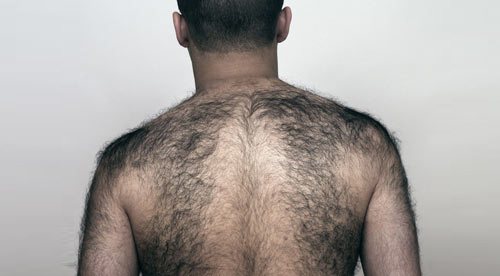
Photo of a hairy back, the cause of which is a hereditary factor.
Science to this day cannot give a definite answer why it is often the male sex who grows hair in the back area. It is believed that this is a hereditary factor that dates back to the times when people were like monkeys. In other words, faced with such a problem, the strong half of humanity still feels the echoes of evolution.
This fact is proven by the fact that parents often observe hairs on the back of a newborn, especially if he was born prematurely. It turns out that they are formed in the womb at 3-4 months of pregnancy. At this moment, the baby’s body is covered with thick embryonic hairs.
Newborn baby with fluff on his back.
Closer to childbirth, they seem to disappear, and instead of them a short, soft, barely noticeable fluff is formed. However, this does not always happen, and the baby may be born with a lot of hair, which is usually located on the back, shoulders, ears and forehead. These hairs are called lanugo.
As a rule, the embryonic covering disappears in babies on its own, but many inexperienced mothers immediately run to their friends with the question of how to roll out such hairs in order to remove them, worrying that this will not happen spontaneously.
Yes, in Rus' there were beliefs that this should be done with your own hands in a bathhouse with a crumb of bread dipped in breast milk. However, according to many doctors, rolling out the cannon in babies is just a superstition, since nothing like this has been described anywhere in medicine.
Note! The fact that hairs on the back of a newborn are not a pathology is a proven fact.
Hairy back as a symptom of disease
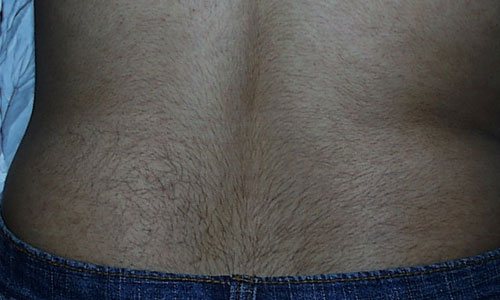
Hirsutism in a woman, which affects the back area.
In addition to the hereditary factor, another, more serious cause of excessive back hair is a disease such as hirsutism, in which there are hormonal disorders in the body. In particular, this disease is due to the fact that the concentration of testosterone (male hormone) in the blood increases.
For men, this is a natural phenomenon, so this disease occurs only in women. For them, such a failure is dangerous because it can cause a lot of health problems.
Therefore, if long and coarse hair is found on the back of a girl or woman, then you should definitely contact an endocrinologist who knows what studies are necessary to make an accurate diagnosis. Moreover, diagnosis should not be delayed, since this disease is often accompanied by infertility, and the sooner it is detected, the more effective and quicker the treatment will be.
There is another disease called hypertrichosis, one of the symptoms of which is coarse hair on the back, as well as on other parts of the body, and it can be completely covered with such vegetation. Unlike the previous disease, it can affect not only women, but also men.
A girl with congenital hypertrichosis, which affects most of the body.
That is, hypertrichosis affects people regardless of gender.
Its etiology may be due to many factors:
- congenital mutation;
- nervous stress;
- oncology;
- traumatic brain injuries;
- long-term use of hormonal medications;
- malfunctions of the secretory glands (pituitary gland, ovaries, adrenal glands);
- thyroid dysfunction;
- menopause
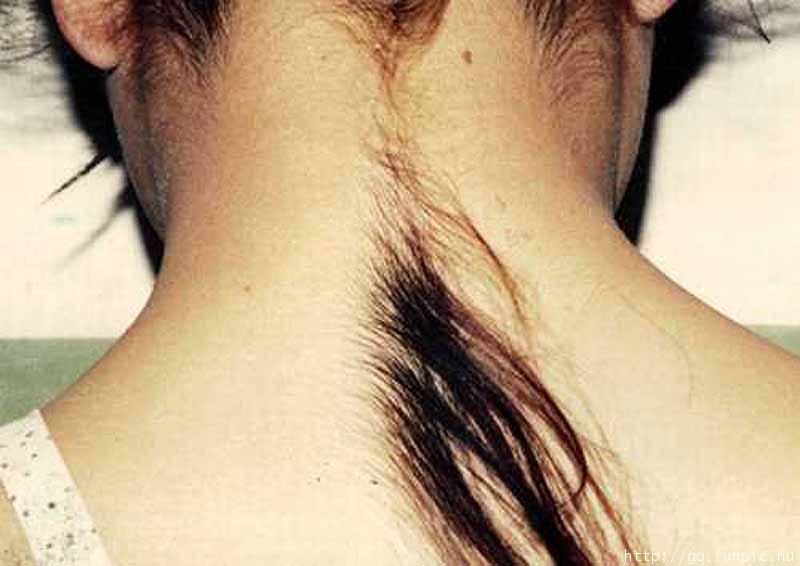
Hypertrichosis, in which hairiness is present only on the upper back.
With congenital hypertrichosis, it is only necessary to remove hair, since this form is incurable. And in what ways in this, as well as in other situations, this can be done, we’ll talk further.
Clinical picture and diagnosis
As a rule, vellus hair in babies on the back, arms or other areas of the body does not cause discomfort to the baby and is not accompanied by severe symptoms. With the pathological nature of the integument, the following manifestations may be observed:
- increased anxiety, moodiness, irritability;
- refusal of breast milk and other foods;
- poor night sleep or insomnia;
- arching of the back when trying to place the child on it.
If you do not remove the stubble, it will interfere with the child and grow, moving to healthy areas of the body. In such areas, inflammatory processes can develop due to friction of the skin and the entry of pathogenic microorganisms into the bulbs.
Due to the continuous movements of the baby's body, hairs are pulled out, causing him pain, and can grow in, causing additional problems that require specific treatment.
To prevent the baby’s anxiety and complications in the form of inflammatory phenomena, it is recommended to remove the pathological cover in a timely manner. In modern medicine, there are many methods that are suitable for newborns.
When identifying the source of excess hair, the child’s height, weight, distribution of the subcutaneous fat layer, and blood pressure levels are taken into account. The stage of puberty is also determined if the cover is observed on the back of a teenager.
- biochemical blood test for the level of enzymes, total cholesterol and other components;
- study on the volume of specific hormones (cortisol, testosterone, prolactin, etc.);
- bioimpedansometry to assess fat mass;
- ultrasound analysis of the adrenal glands, pancreas, ovaries, kidneys;
- genetic diagnostics.
If ultrasound is ineffective, magnetic resonance imaging is performed. Diagnostic laparoscopy is prescribed to identify tumor-like neoplasms in the ovaries.
How to get rid of hair in babies
To reduce the risk of itching and other discomfort, it is recommended to follow the rules of personal hygiene and carry out water procedures more often, after which the hairy skin can be treated with any oil, for example, natural sunflower or olive. Baby oil, which can be bought at any pharmacy, is suitable.
At home, they get rid of the integument using folk remedies, which are no less effective than generally accepted methods:
- Using bread crumb: soak the bread in water, place it on cling film, and then apply it to the hair. Leave the compress on for 15-20 minutes. The procedure is carried out daily for 5-6 days.
- The above method can be adjusted by softening the bread in breast milk. In this case, the procedure is carried out after bathing: gently roll out the hair in a circular motion, trying not to injure the skin to prevent infection of the hair follicles.
It is forbidden for infants to use tweezers to pluck hair, apply any chemical compositions and products with a thick sticky consistency, as well as abrasive substances.
Children from about the age of three can remove hair using hydrogen peroxide (3%) mixed with soap. After just 2-3 procedures, you can notice how the hairs have become thinner, began to break off, and their growth has slowed down.
What is bristle in infants and how to identify it?
The skin of babies is covered with a thin and soft fluff, which gradually comes off and completely disappears a few weeks after birth. In some children, on certain parts of the body, in addition to such formations, you can find short, dark hairs, dense, like wires or the stubble of an adult man. It happens that they do not come out, remaining under the top layer of the child’s skin. The appearance of such stubble in a newborn causes maximum discomfort and requires immediate intervention.
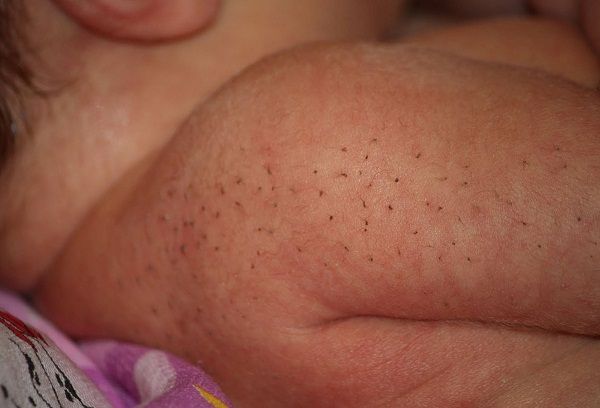
Most often, tickler affects the back, but can also occur on the arms and legs (especially the hips). If there are no external manifestations of bristles in newborns, then final conclusions can be drawn using the following symptoms:
- The child’s behavior changes dramatically, he literally loses peace, sleeps poorly and constantly tosses and turns. It seems that the baby is trying to get into a more comfortable position.
- Most children experience shoulder movements as if they are trying to scratch themselves.
- Symptoms worsen when the child is placed on the problem area. For example, the baby calms down in his arms or on his stomach, and begins to be capricious when laid out on his back.
Tip: To make a final diagnosis yourself, you need to moisten the problem area of the baby's skin with breast milk or lubricate it with a rich cream. In response to the impact, characteristic hairs will begin to appear.
- Some parents try to remove the newborn's stubble from under the epidermis using various folk remedies that are similar in effect to the use of peelings and scrubs. Then the coarse hairs become obvious.
Sometimes the bristles are very short or almost transparent, in which case they can only be identified by running your fingertips over the child's skin. Often the phenomenon is accompanied by the appearance of diaper rash. Most often, tickling appears at 2-3 months of life in children, but it can happen earlier.
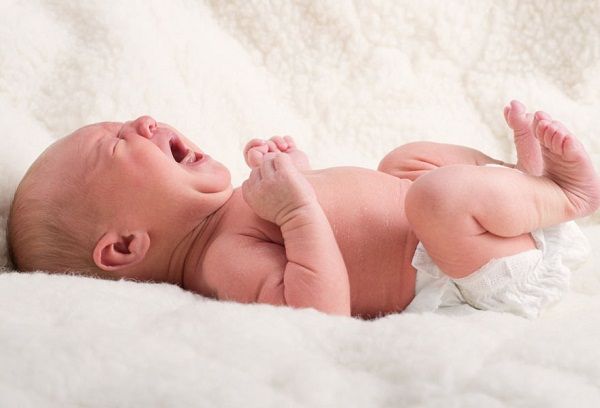
Hair removal for teenagers
Once you reach adolescence, a razor is considered the simplest and most affordable way to remove unwanted hair, but you need to know some rules, following which you can avoid complications.
Most razors cause skin irritation after use. In addition, the cover becomes darker and tougher; small cuts and microtraumas may remain on the epidermis, through which pathogenic microorganisms easily penetrate. Razors can be used from 11-12 years old if the hair is dark.
An alternative to machine depilation is special creams that prevent the skin from becoming rough. There are products on sale that are intended specifically for teenagers from 11-12 years old. To exclude an allergic reaction, before applying the composition, you need to conduct a test: apply a small amount of the product to your wrist and monitor the reaction. If itching or rash does not appear, it can be used.
The best options for hair removal for teenagers are depilation with wax or sugar. The procedure does not cause damage to the hair follicles, after which the hair becomes thinner and lighter. If you start this type of hair removal in early adolescence, hair growth slows down significantly; in the future, it will grow much slower than in girls who use regular razors. Despite the pain during the session, sugaring is a safe procedure.
From a later age - from 14-15 years old, you can undergo laser therapy sessions. It is no less safe than sugaring. There are no serious contraindications to the sessions. However, you need to visit a specialist only after the menstrual cycle has stabilized.
